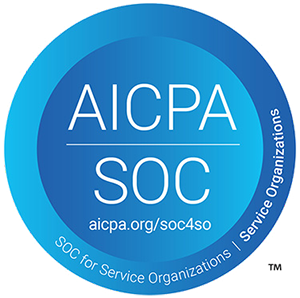Since the 1980s, remote work has been steadily on the rise. Recently, however, the Coronavirus pandemic forced wide-spread, global remote work. As we work together to navigate remote work, many wonder if remote work will be here to stay.
According to Willis Towers Watson, 59% expect work-from-home policies will remain intact after the pandemic ends while about half expect flexible work arrangements to be the norm. Based on past, yet recent, research, this flexibility may be better for employees and organizations alike. In fact, research from Gallup found that 54% of workers would leave a job for one that offers remote work options and remote work increases productivity by 21%. Studies from Ultimate Software show that remote work reduces stress in 50% of workers.
If you’re considering staying remote either partially or completely post-pandemic, here’s what you need to know about creating and communicating your remote work and hiring policy.
Creating a Work from Home Policy
While creating a work from home policy, it’s important to understand how your organization works. Who are key stakeholders to involve? Do different departments have different needs? How about different employees within different departments? What tools will employees need to be successful remote workers? Do employees understand how to use the tools? How will the organization manage shared services (i.e. technical support)?
Developing Remote Hiring Processes
As employees start to work from home, you’ll need to develop remote hiring processes. That includes conducting strategic planning - like normal. However, the differences lie in interviewing and assessing candidates, which will require some new tools like chatbots, video interviewing, and pre-hire assessment tools. Considering the usual hiring conventions may be out of reach to virtual recruiters, a deep understanding of how to build remote teams is needed.
Communicating Your Remote Work and Hiring Policies
After creating your work-from-home or hiring-from-home policies, communicating those policies is equally as important. That means viewing department heads, managers, and employees as partners and rolling out the policies in a very human way. Let people know about the policies, what resources are available to them, and keep the lines of communication open for employees to deliver feedback on their own time and in their own way.
Tools that Help People Work from Home
There are so many kinds of tools that can help us all work and hire from home. Some tools are physical while others are technological. In terms of physical tools, Intuit shares that 57% of people working from home didn't have a home office or enough home office space for everyone to comfortably work from home. Additionally, Procurify shares that employees want all kinds of tools from their home offices including sitting and standing desks, ergonomic chairs, and enough monitors.
Technology-wise, recruiting chatbots automate screening and scheduling while answering job related questions from candidates in real time. Collaboration tools like Microsoft Teams keep hiring teams communicating and on the same page throughout the hiring process. Video interviewing technology adds a more human approach to remote hiring, allowing hiring teams and candidates to see each other when in-person interviews aren’t an option. Video interviews sometimes even utilize AI to help teams make better hiring decisions in addition to human evaluations. Further, digitally proctored pre-hire assessments prevent cheating and offer a way for organizations to understand whether candidates can do what they say they can. To finalize the hiring process, organizations now leverage onboarding software to welcome new hires well beyond new hire paperwork and compliance.
Between physical and technological tools, how organizations manage and communicate the transition to remote hiring and work can help acclimate both employees and external candidates to their new virtual way of work.
To learn more about meaningful recruiting conversations and remote hiring, check out Back to the Future: 11 Tips to Improve Hiring with Meaningful Recruiting Conversations, the Talent Board's Meaningful Recruiting Conversations webinar, The Guide to Remote Hiring and Work 101, and the Remote Hiring Starter Kit.
.jpg)






Leave a Reply